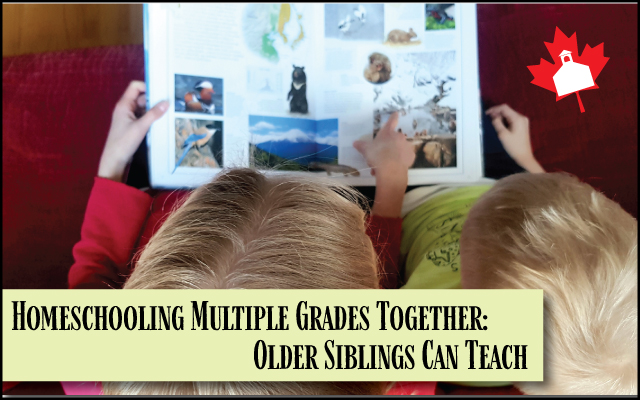One of the more daunting tasks of educating your own children can be effectively homeschooling multiple grades together. While this can seem difficult, there are many different methods, tips and ideas to make it easier for you and your children. One of the beautiful aspects of homeschooling is seeing your children learn (and bond) with their siblings and help out where needed.
The collection of content on this topic will be sure to get your creative juices flowing on ways you can make teaching multiple grades together work in your home. In 7 Practical Tips for Teaching Multiple Kids we offer tried and true methods for achieving this balance in your family. In Using Games to Teach Multiple Children we list various card and board games that bring your family together and are also great learning opportunities for various ages.
If you have some older children, you should read Homeschooling Multiple Grades Together: Older Siblings Can Teach for suggestions on how to involve your older children in the education of your little ones. And if you need a reminder that homeschooling multiple children of various ages together is nothing new or out of the norm, click and read One Room Schoolhouses: The Original Multi-Age Classroom. You may even be able to find one near you to visit!
Be sure to scroll down to see all the helpful content related to this theme and don't miss the More For You section that has additional resources to help you homeschool multiple grades together.

Teaching one student can be challenging at times, but eventually you can get into a groove that works. But add one or two (or more!) into the mix, and here is where the balancing act begins! Let us help you by offering you some tried and true tips for teaching multiple kids.

Playing games can be an underrated way to enhance learning and also spend time together as a family. Games bring the family together to do something that is mutually enjoyable, therefore fostering the family bond. Having fun with your kids is an excellent way to strengthen your relationship, and mixing in a little learning is a win-win situation! The possibilities are really endless for games to play with your kids, and most games can be turned into a learning activity for young kids just by having them count or read cards, etc. Below we will share some of our favourite games for learning to bring different ages together.

If you are homeschooling multiple grades together, things can get pretty hectic some days, if not most days. Time to get those older children to help out! By doing this, you can delegate tasks and encourage your older kids to take on more responsibility and put into practice some of the things they’ve already learned. This will boost their confidence and let them know that they are being helpful and feel smart in the process as well as solidifying their own knowledge.

Homeschooling multiple ages in one home can seem impossible. Teaching multiple kids at various ages and learning levels is not a new concept. Homeschooling children of multiple ages is remarkably similar to the one room schoolhouses that were used as recent as the 1950’s in public education and are even still used today in mennonite communities.

Living books do an excellent job bringing topics to life for kids, and Easter is no different. Reading beautifully worded and illustrated picture books is a great way to begin discussion with your kids and also connect with them. Kids of all ages can enjoy listening to these beautifully told stories about the true meaning of Easter. There are many beautiful and loved Easter and spring themed books out there, but here we focused on those that tell the story of the real meaning of Easter.

























